When it comes to marketing, making the right offer to the right audience in the right way can be a tricky balance to strike. Good segmentation is a key component of the process. And Once you know precisely what kind of customers exist within the various audience segments of your target audience, you can create offers and messages that will have a real impact.
In this article, we’ll use the Semrush One2Target tool to walk through the process of building an offer for a specific segment, choosing the right message to communicate it, and making sure the message travels through the right venues. Let’s go!
1. Define the audience segment you want to target
Before you begin thinking about offers, you need to know what segment of your audience you want to reach. If you haven’t done this work, go ahead and do it now. Semrush One2Target provides all of the data you need!
If you do have a segment of your audience in mind, make note of the key characteristics. For this use case, we’ll take an audience segment from the Audio Technology market, specifically companies that make headphones.
We can define our example segment like this:
- Females aged 18-24
- Live in the U.S. and speak English
- Household size of 3-4
- Highschool or college education
- Student or work part-time
- Low income
- Prefer mobile devices for surfing the internet
- Choose Youtube for their social media platform
- Interested in Beats by Dre and Skullcandy headphones
2. Build the Offer
To shape your offer, consider a few factors from your target audience. First, take the demographics, employment, education details uncovered in your segmentation research. Because we know our target audience prefers Beats by Dre and Skullcandy, let’s look to those brands in particular for insights.
First, we know that our audience is aged 18-24, and we’re targeting females in particular. Here’s the Demographics Report where we gathered that information.

And our audience focus is students and part-time workers with a highschool or college education, as shown in the Socioeconomics Report.
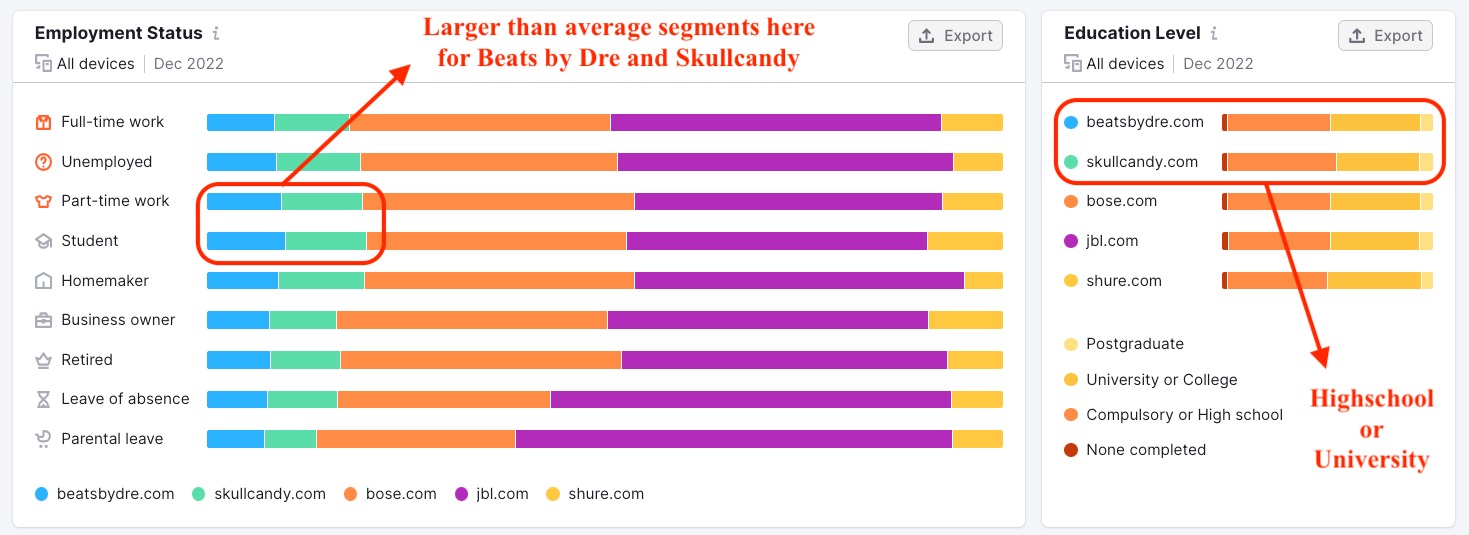
Knowing these insights, we can turn to the household size and income metrics in the Socioeconomics Report for additional details that will help shape the offer. For our target audience, the household size was 3-4 people and the income was low.

From here, think about what kind of offer might work best for attracting these particular customers toward the products.
In terms of household size and age, we might hypothesize our customers are either still living at home with their parents or living on their own with roommates. If the audience was older, we might wonder if they had children of their own making up the 3-4 person household. But considering their age, their employment status (student or part-time workers) they’re likely not there yet.
From here, consider what kind of offers might appeal to this particular group. We know their income is low. And being that they’re students and part-time workers, they will likely be looking for a deal. So we could offer a lower end line of products to this group with an attached discount.
We could also think about how young people and students use their headphones. We might suspect they’ll be listening to music as opposed to audiobooks and podcasts, so our offer might include products or features that enhance the listening experience. Or maybe they’re trying to study while their roommates are partying, so noise canceling features might sell.
These are just a few examples, but they demonstrate the process of moving from audience data to hypothesis, which allows us to shape a compelling offer.
3. Shape the message
When thinking about your messaging, consider some of the same metrics you used to build the offer. First, take the age group for your audience. For the audio device target market, our target audience is 18-24.

In this case, the messaging needs to appeal to a Generation Z audience. In our messaging we will want to consider how Gen Zers think, how they talk, and what they value.
Next, consider the breakdown of males and females in your market. Whether you’re focusing on a particular segment or trying to target both males and females in a particular segment, your messaging will change.
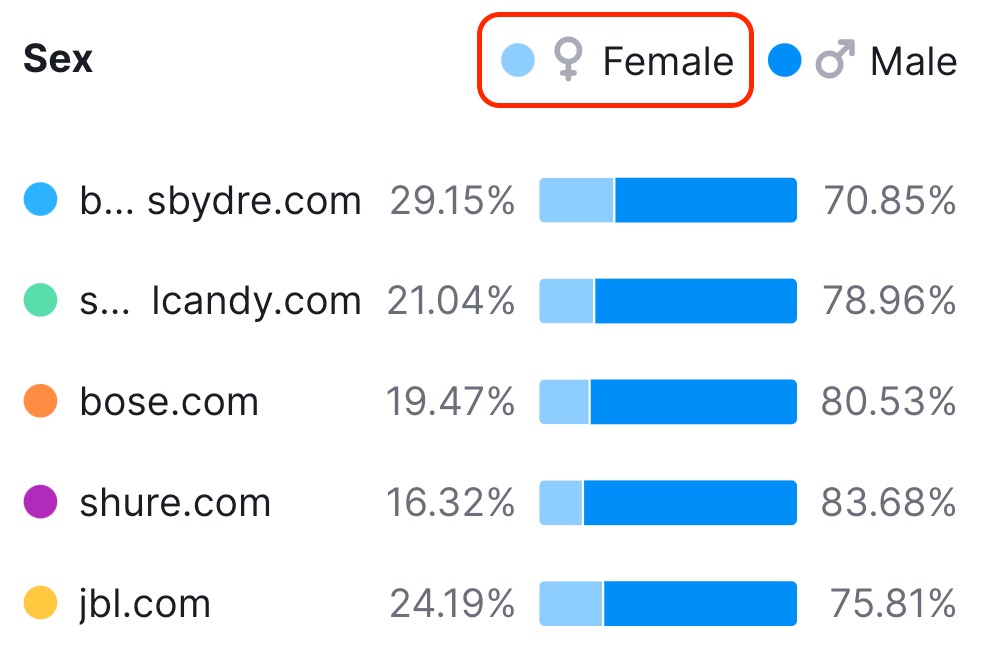
We’re focusing on females only in this use case, so we’ll use language, sounds, and images that reflect our target audience. For example, our video ad might show a young woman using our headphones to listen to a female led band in an environment where students hang out.
Finally, consider your audience’s education level. Our example audience has at least a highschool diploma, and many have college experience.
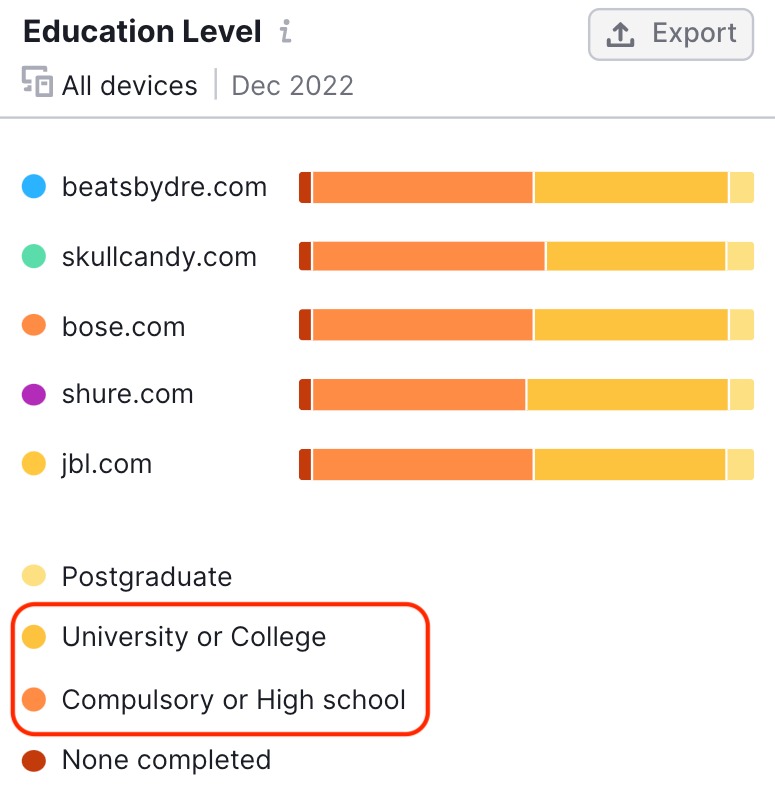
Understanding an audience’s education level can help you make choices about the kinds of words to use in your marketing to make sure your audience fully understands your offer.
4. Choose the medium
Finally, after you’ve shaped your offer and made decisions about the messaging, you can look into the best medium for reaching your audience.
Start with the Behavior Report, which reveals your audience’s Device Type and Social Media Preferences. This data can help you know how to design your marketing materials and where to share them for the highest impact.
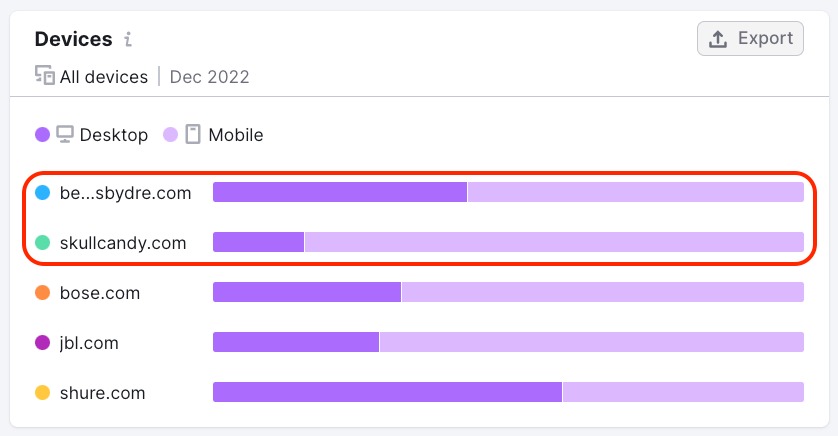
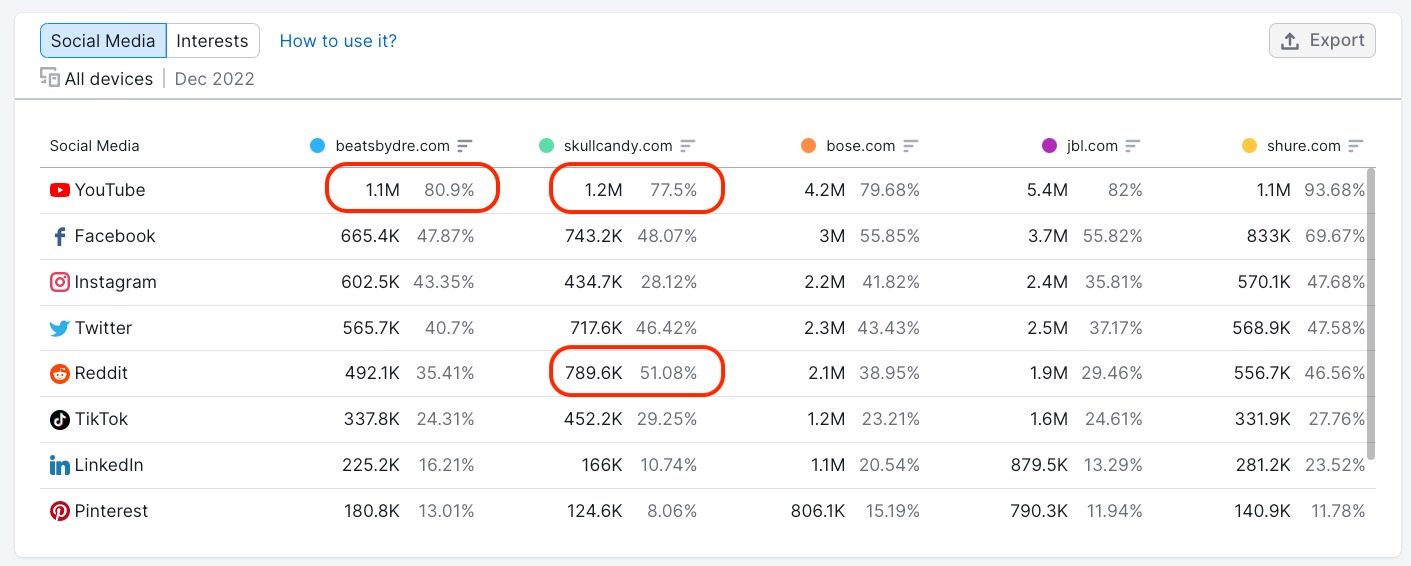
For our example audience, mobile devices are preferred. In terms of social media, Youtube and Facebook are key platforms, but we might also try Reddit, which is particularly popular among Skullcandy’s audience.
Finally, check the visited domains section of the Audience Overlap report. This section can help you uncover websites where you might place ads or look for partnership opportunities.
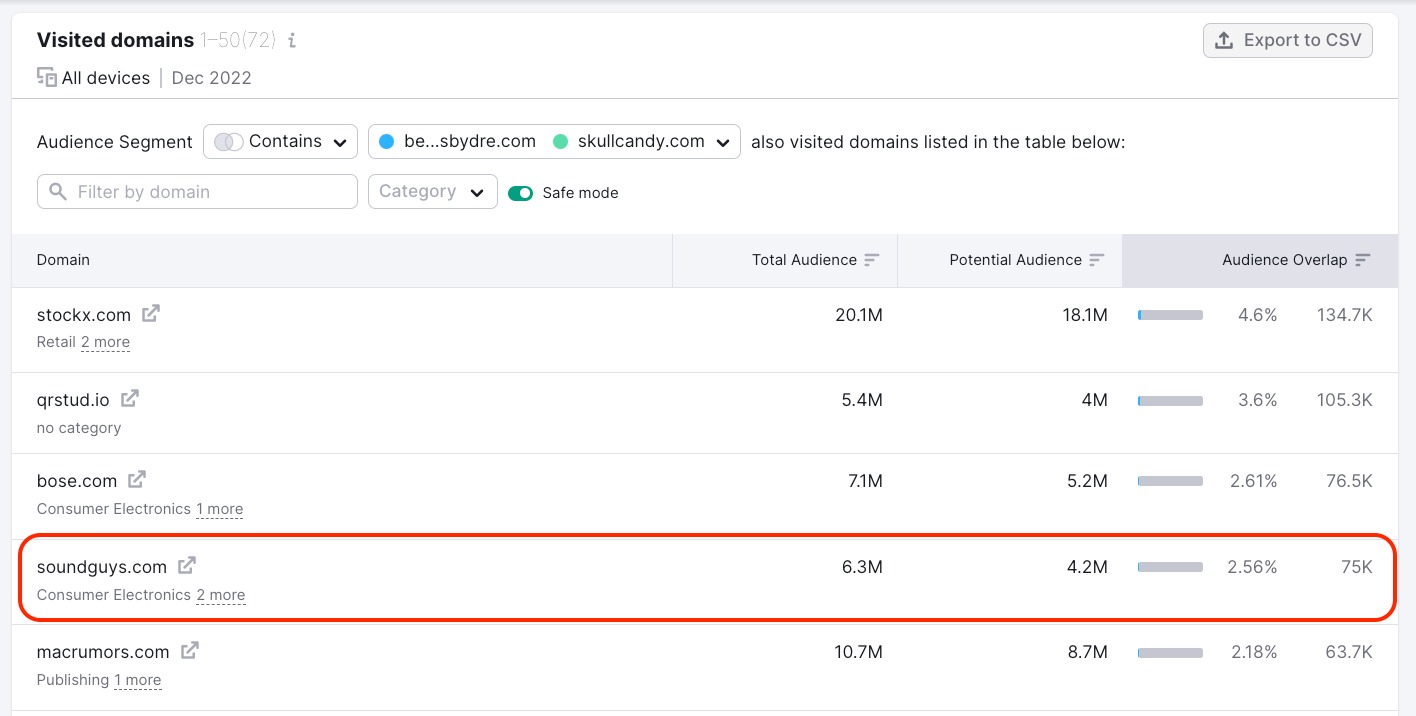
For example, here we discover that 75K audience members who visited beatsbydre.com and skullcandy.com also visited soundguys.com. This could be a great place to place ads.
You can also filter by category to look for opportunities in specific areas. We chose the “Publishing” category and discovered this list.
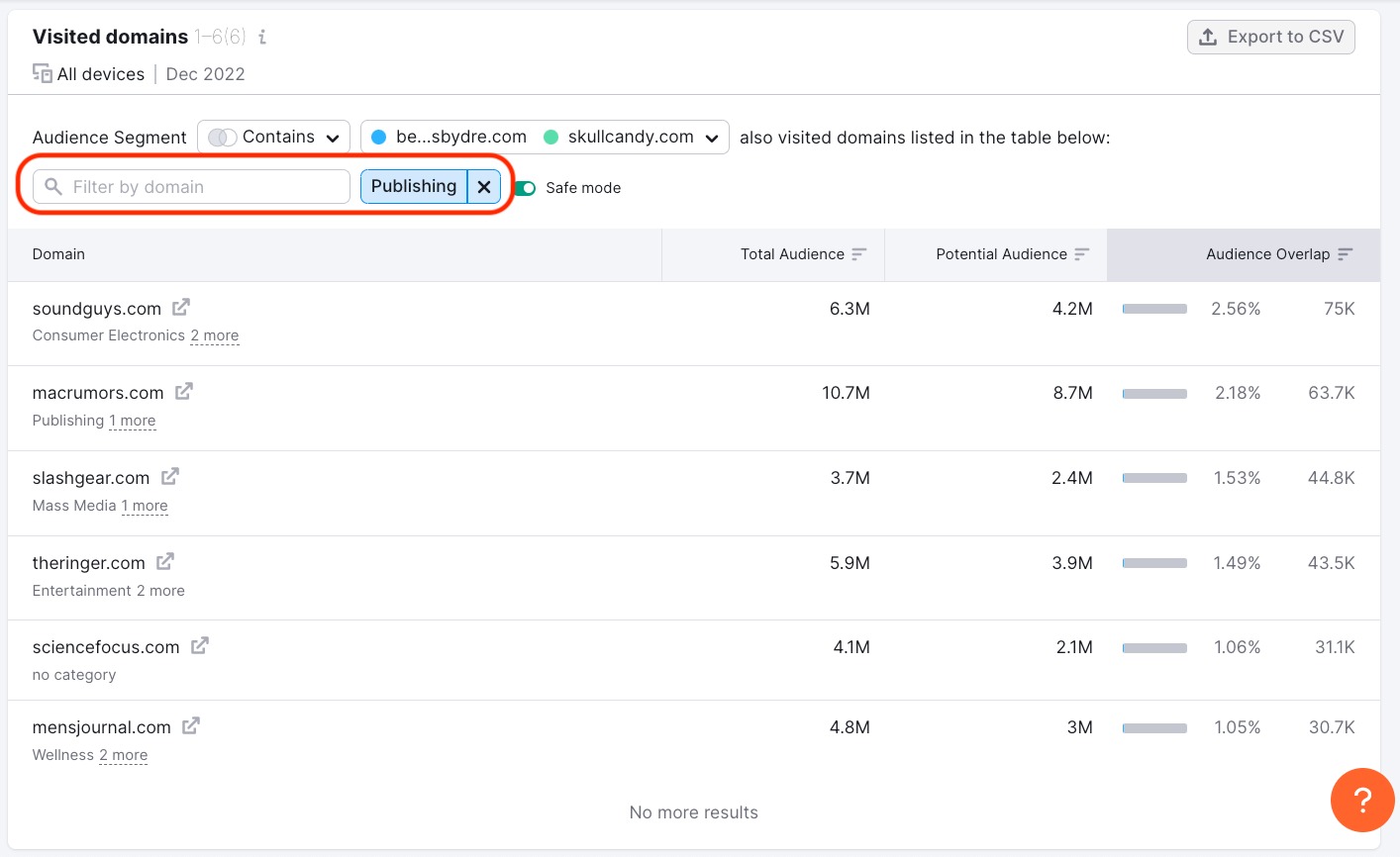
Exploring a variety of categories can help you discover a number of avenues for reaching your potential customers with your offers.